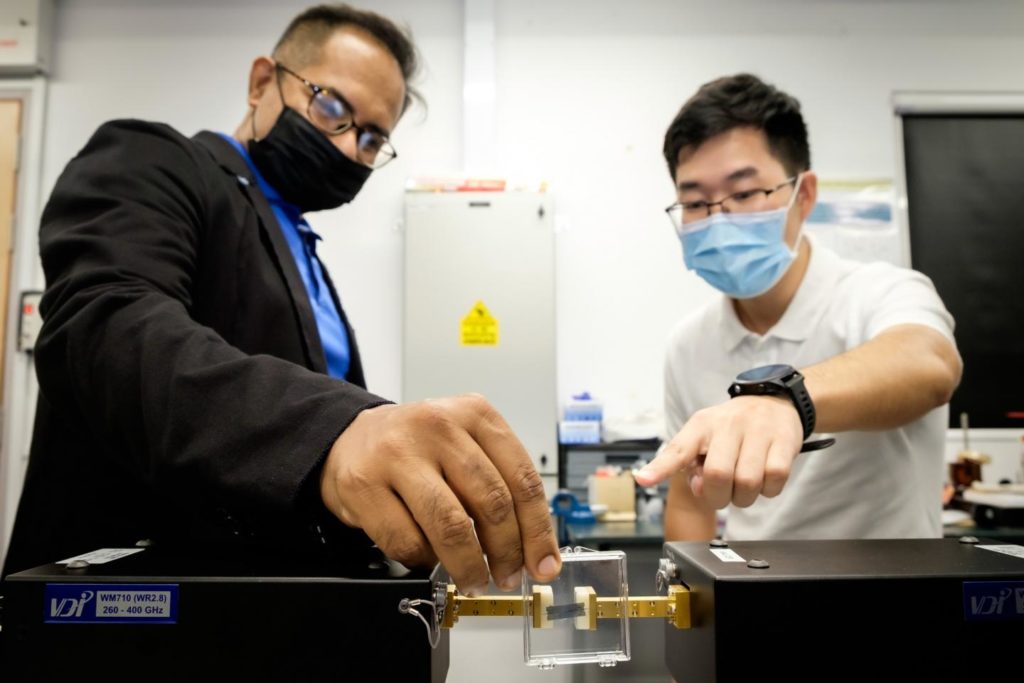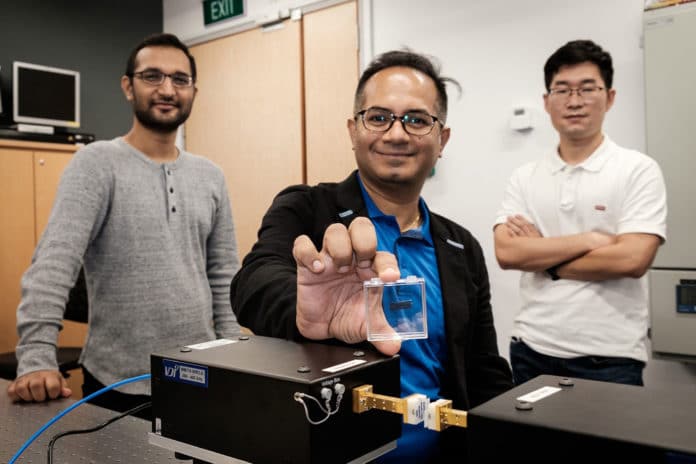While 5G is not yet widespread, researchers have begun to develop next-generation mobile network technology known as 6G. Scientists from Nanyang Technological University, Singapore (NTU Singapore) and Osaka University in Japan have built a new ultra-fast, wireless chip that enables data transmission speeds that surpass the 5th Generation (5G) standards for telecommunications.
The novel chip can transmit terahertz (THz) waves resulting in a data rate of 11 Gigabits per second (Gbit/s), which is capable of supporting the real-time mission of uncompressed 4K high-definition video and exceeds the hitherto theoretical limit of 10 Gbit/s for 5G wireless communications.
Generating Terahertz waves is difficult and expensive, requires special lasers, and the frequency is limited. Therefore, the team used a new material to transmit Terahertz waves called photonic topological insulators (PTI) that transmit Terahertz waves at high speeds. Using photonic topological isolators, which use the movement of photons instead of electrons, scientists have been able to solve two of the biggest issues the material defects and transmission error rates found in conventional waveguides such as crystals or hollow cables.

It allows light waves to be conducted on the surface and edges of the insulators, akin to a train following railroads, rather than through the material. When the light travels along with photonic topological insulators, it can be redirected around sharp corners, and its flow will resist being disturbed by material imperfections.
“With the 4th industrial revolution and the rapid adoption of Internet-of-Things (IoT) equipment, including smart devices, remote cameras, and sensors, IoT equipment needs to handle high volumes of data wirelessly, and relies on communication networks to deliver ultra-high speeds and low latency,” explains NTU Assoc Prof and the project lead Ranjan Singh.
“By employing THz technology, it can potentially boost intra-chip and inter-chip communication to support Artificial intelligence and cloud-based technologies, such as interconnected self-driving cars, which will need to transmit data quickly to other nearby cars and infrastructure to navigate better and also to avoid accidents.”
The discovery could pave the way for more PTI THz interconnects – structures that connect various components in a circuit – to be integrated into wireless communication devices to give the next generation ‘6G’ communications an unprecedented terabytes-per-second speed (10 to 100 times faster than 5G) in future.
Researchers also believe that their new ultra-fast chip will be easily integrated into electronic and photonic circuit designs by designing and producing a miniaturized platform using current silicon manufacturing processes. It will also help the widespread adoption of THz in the future.
